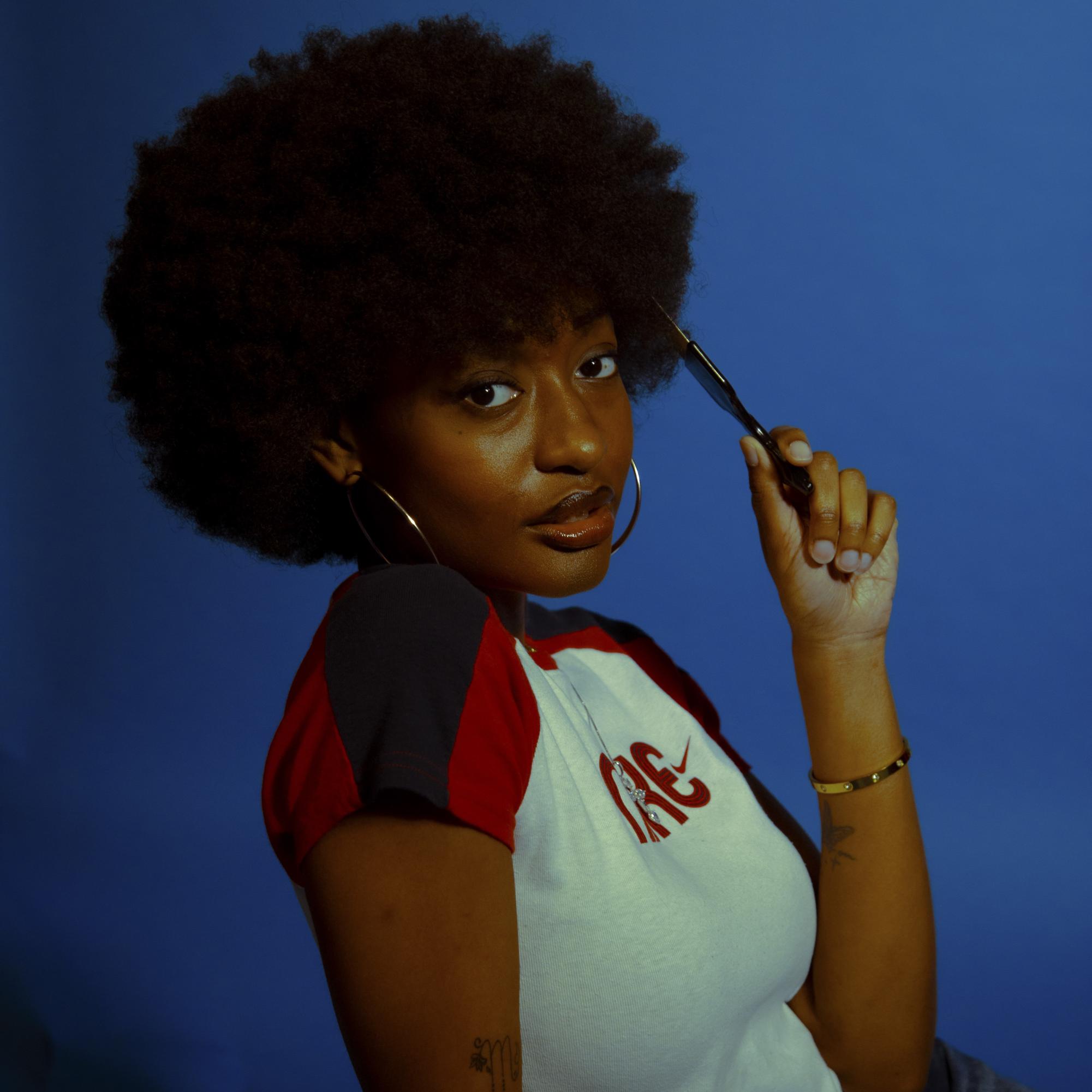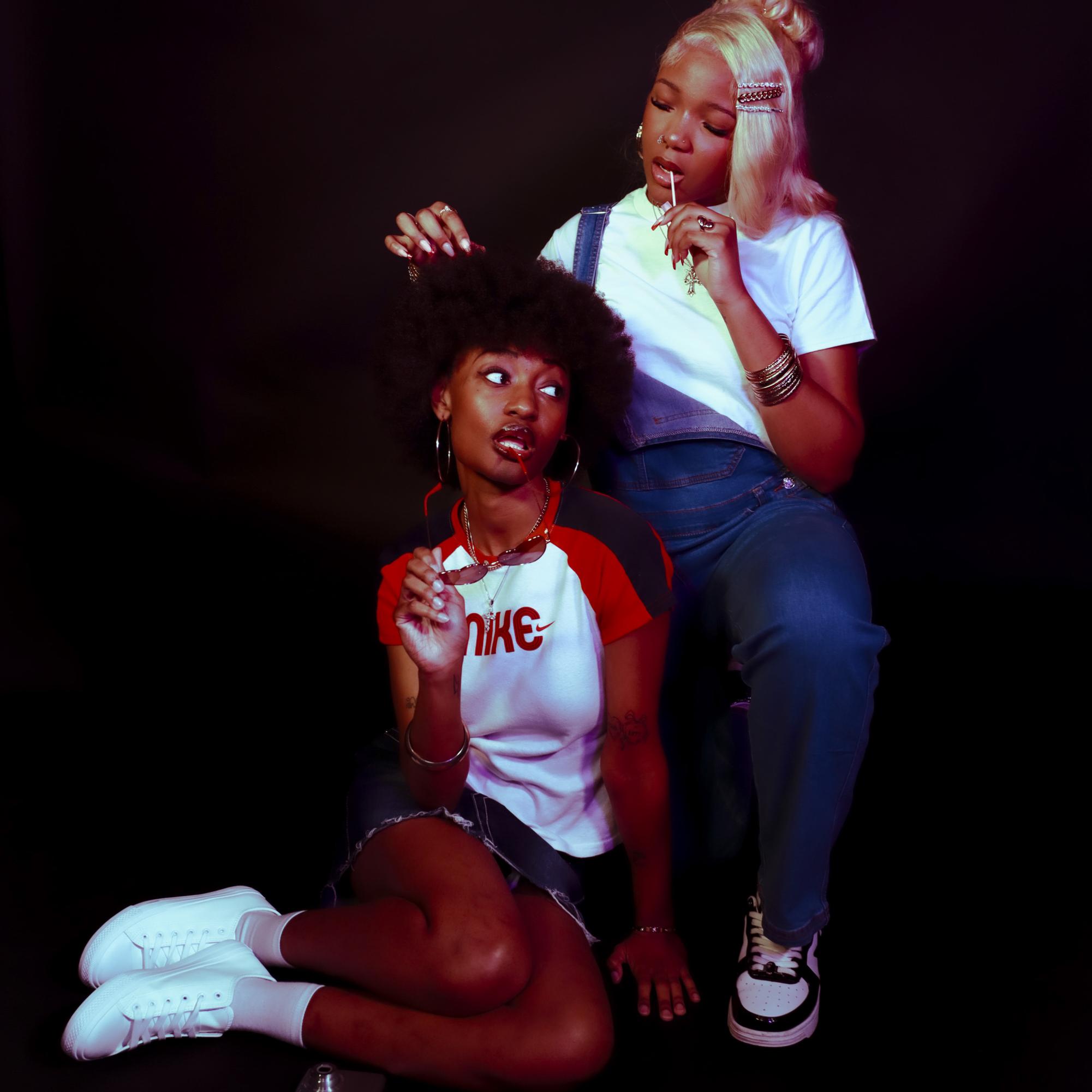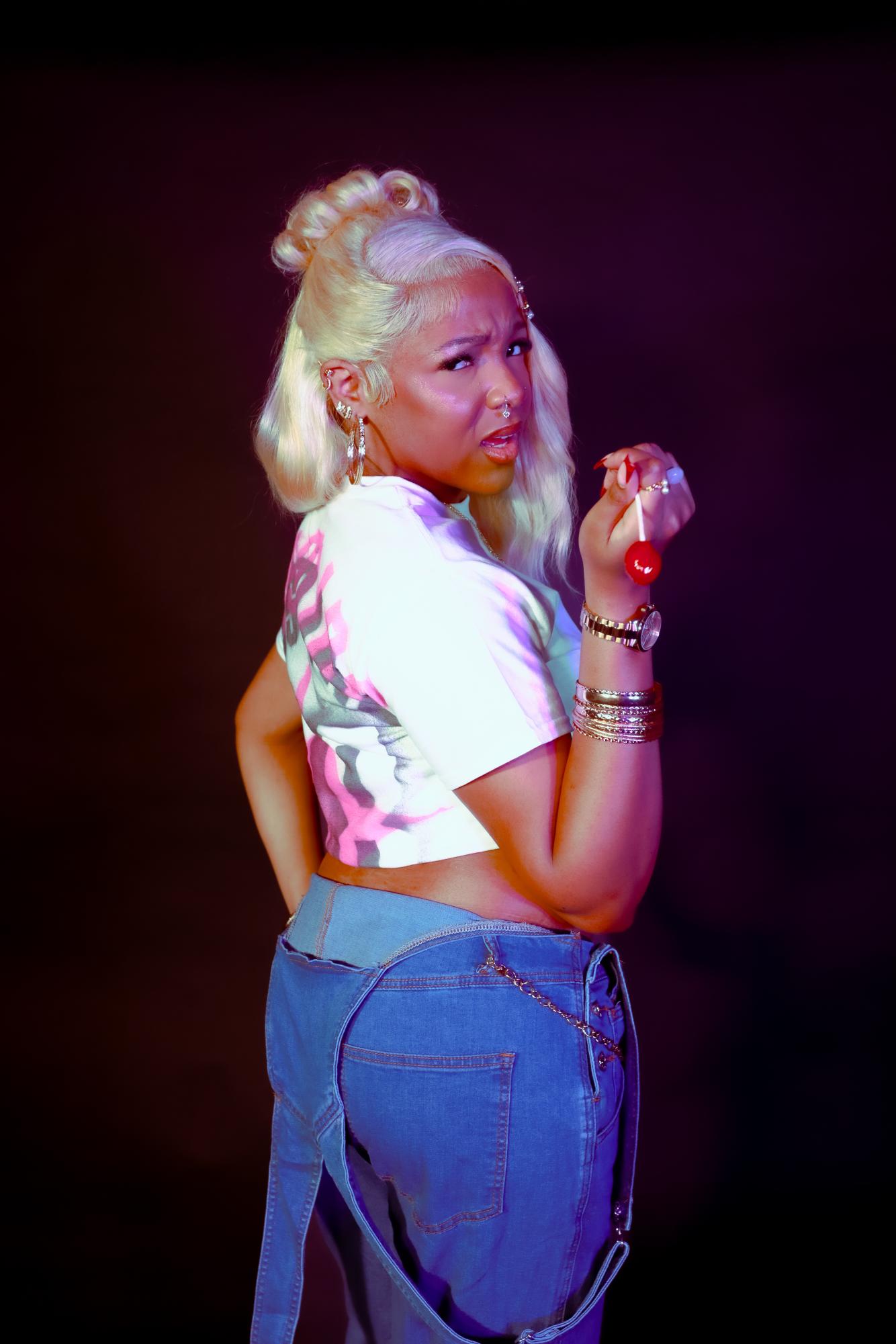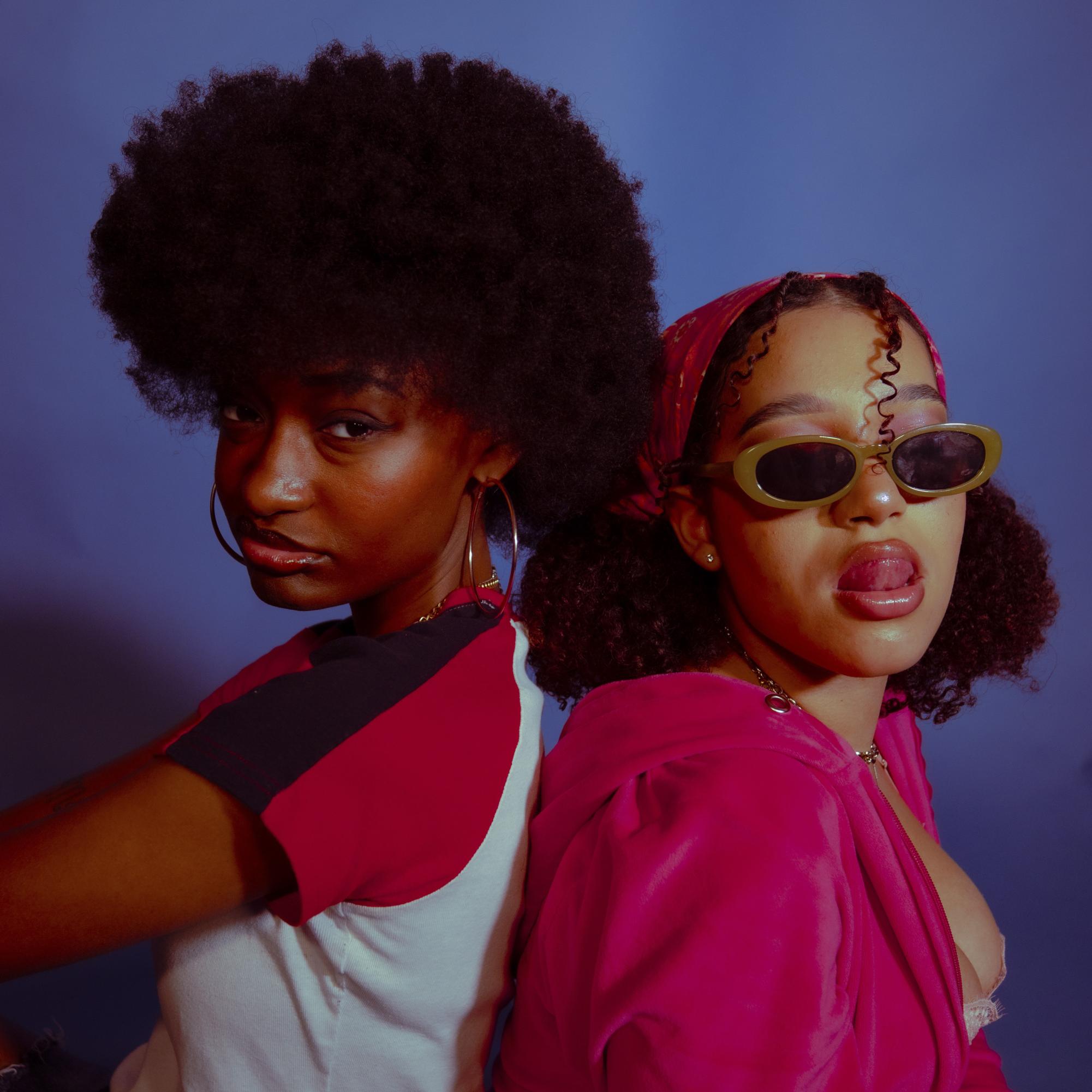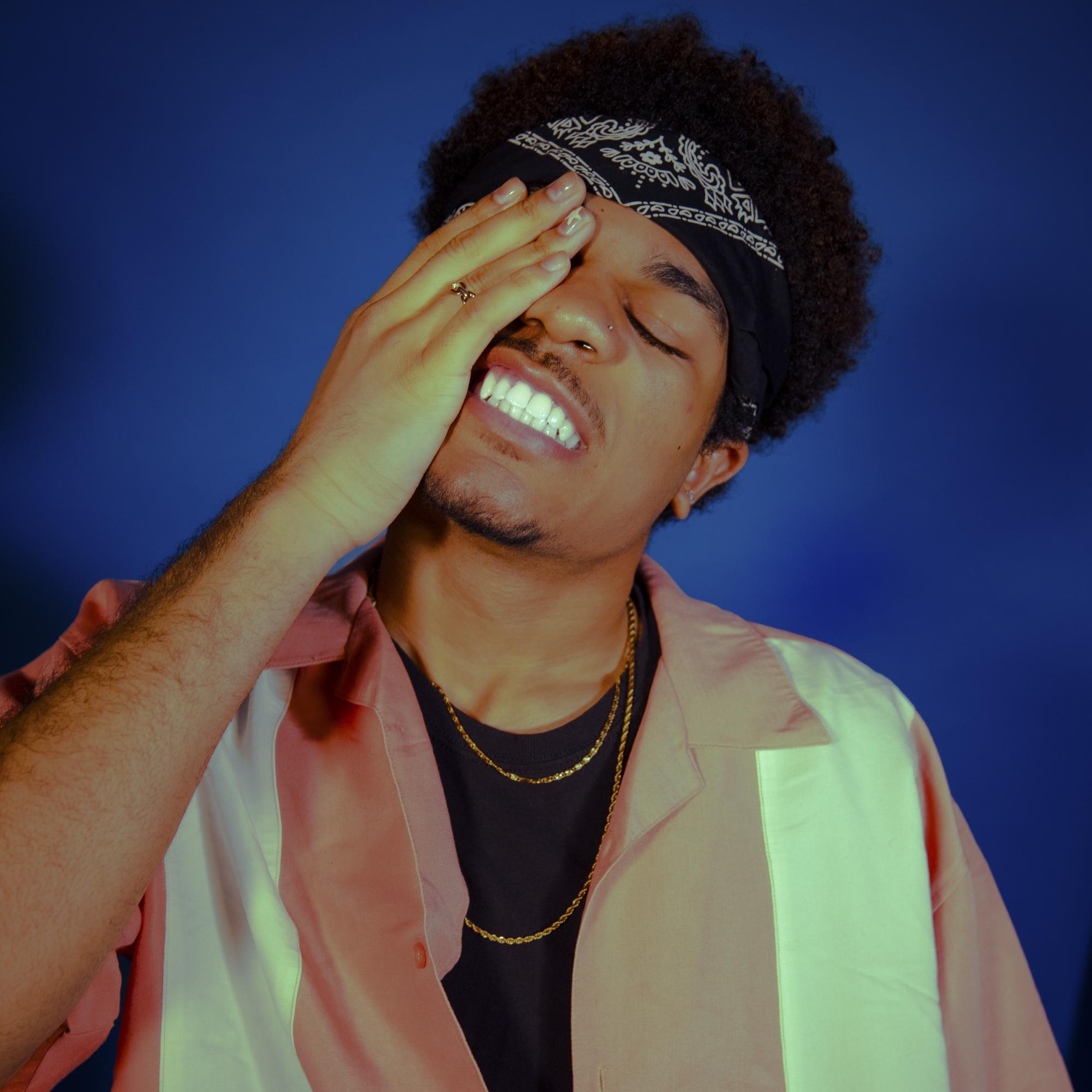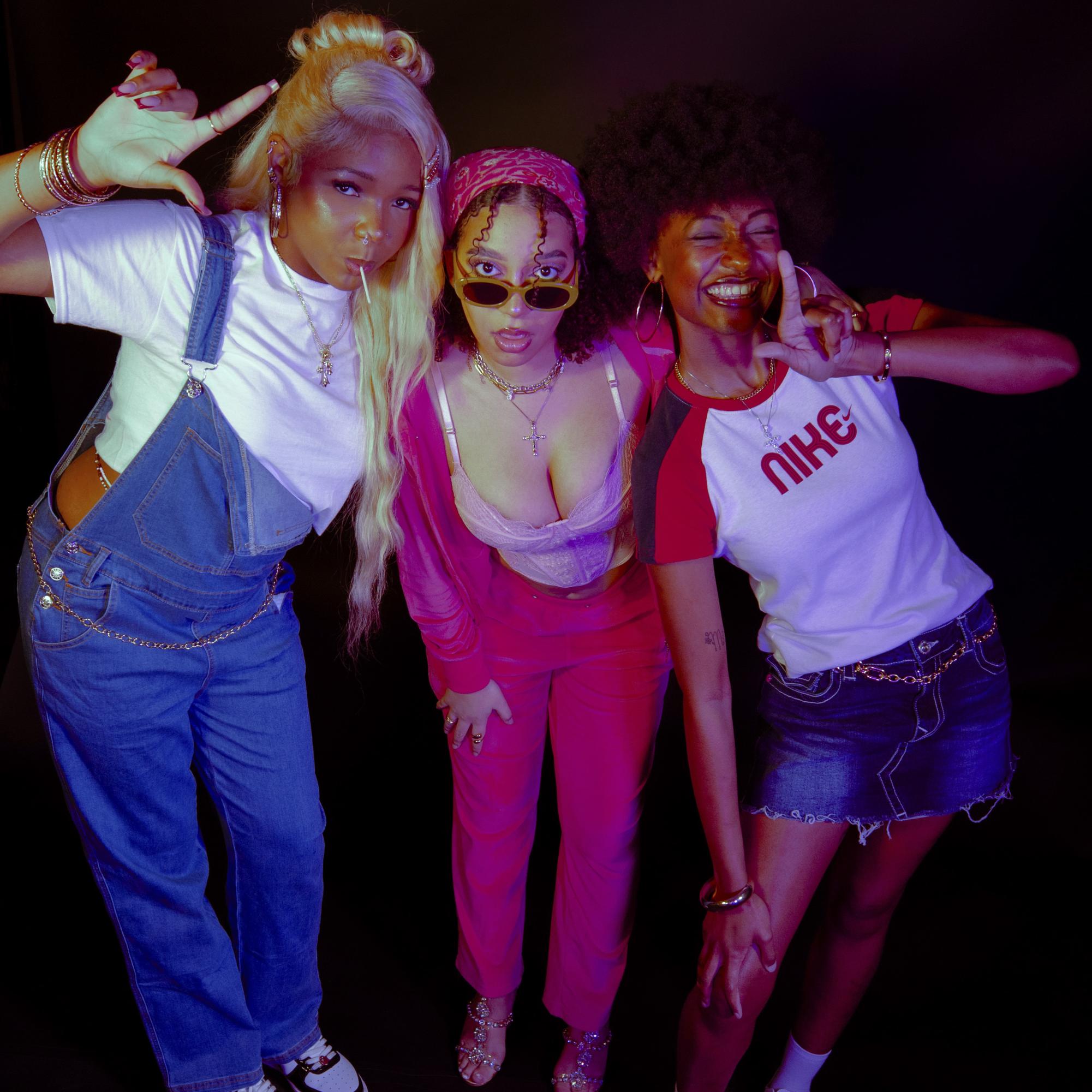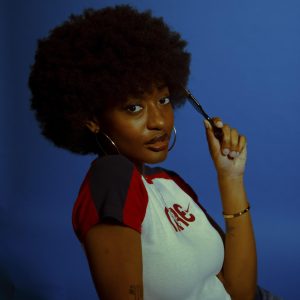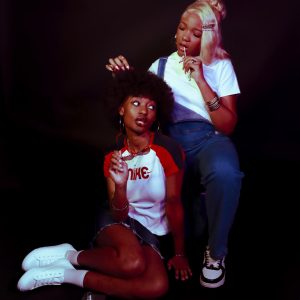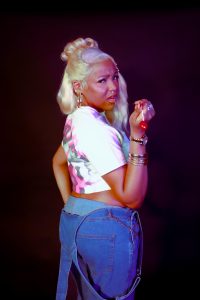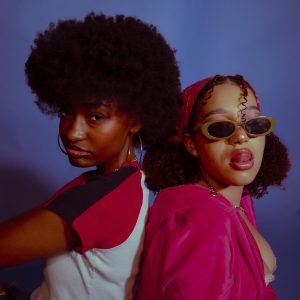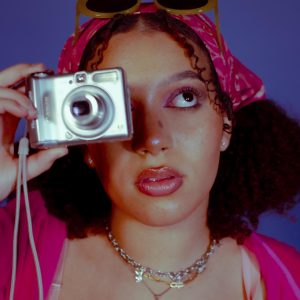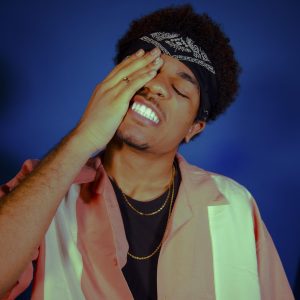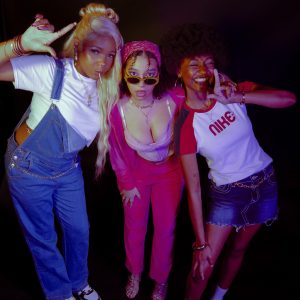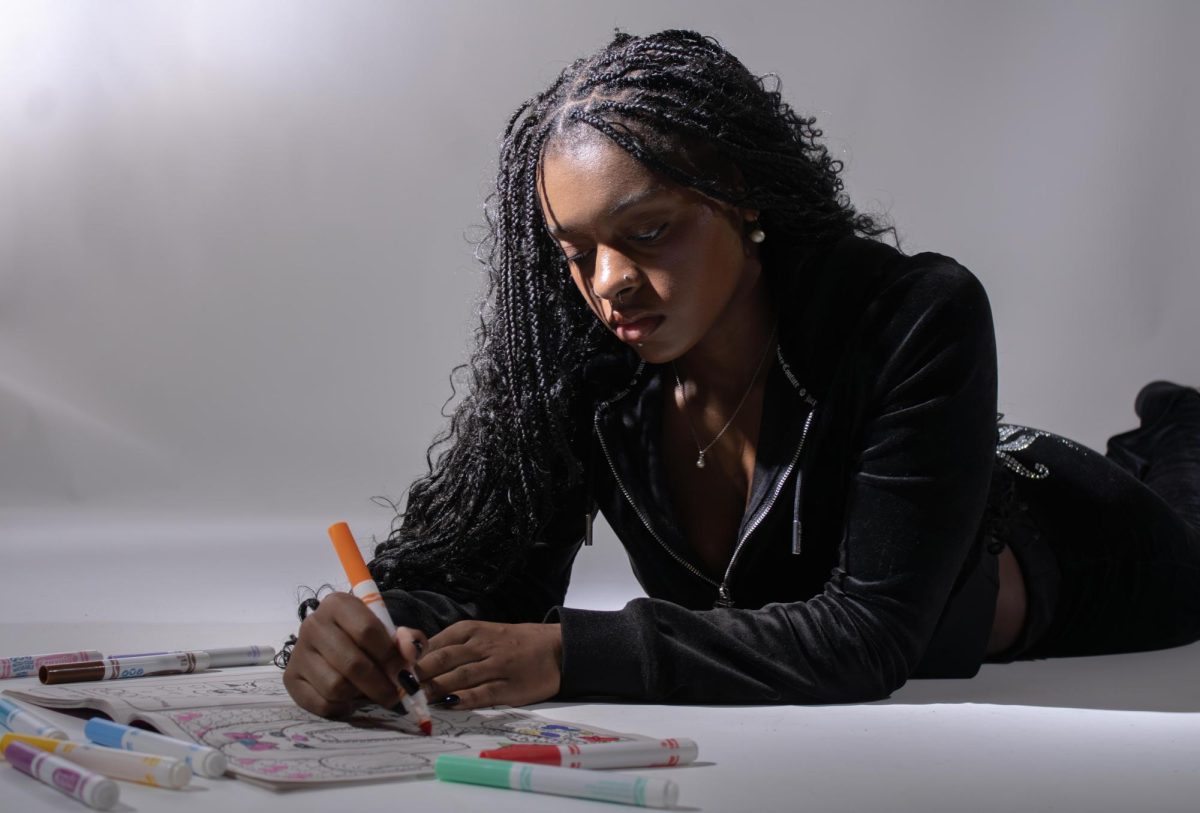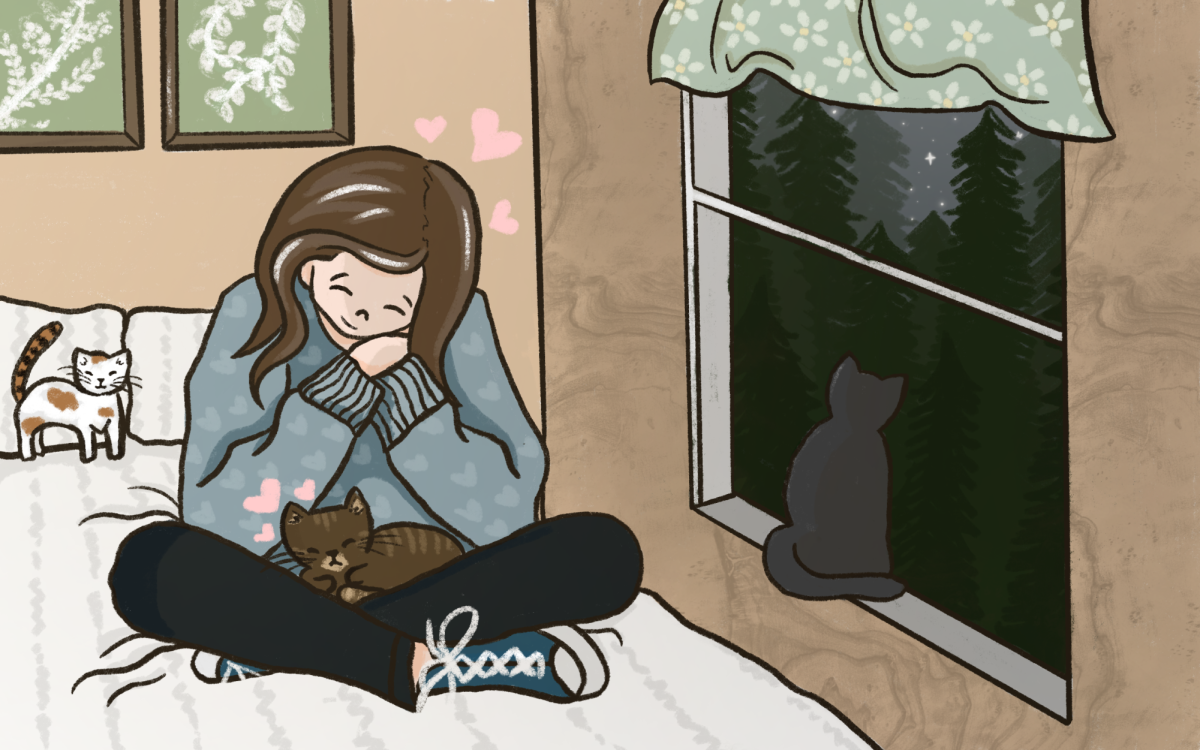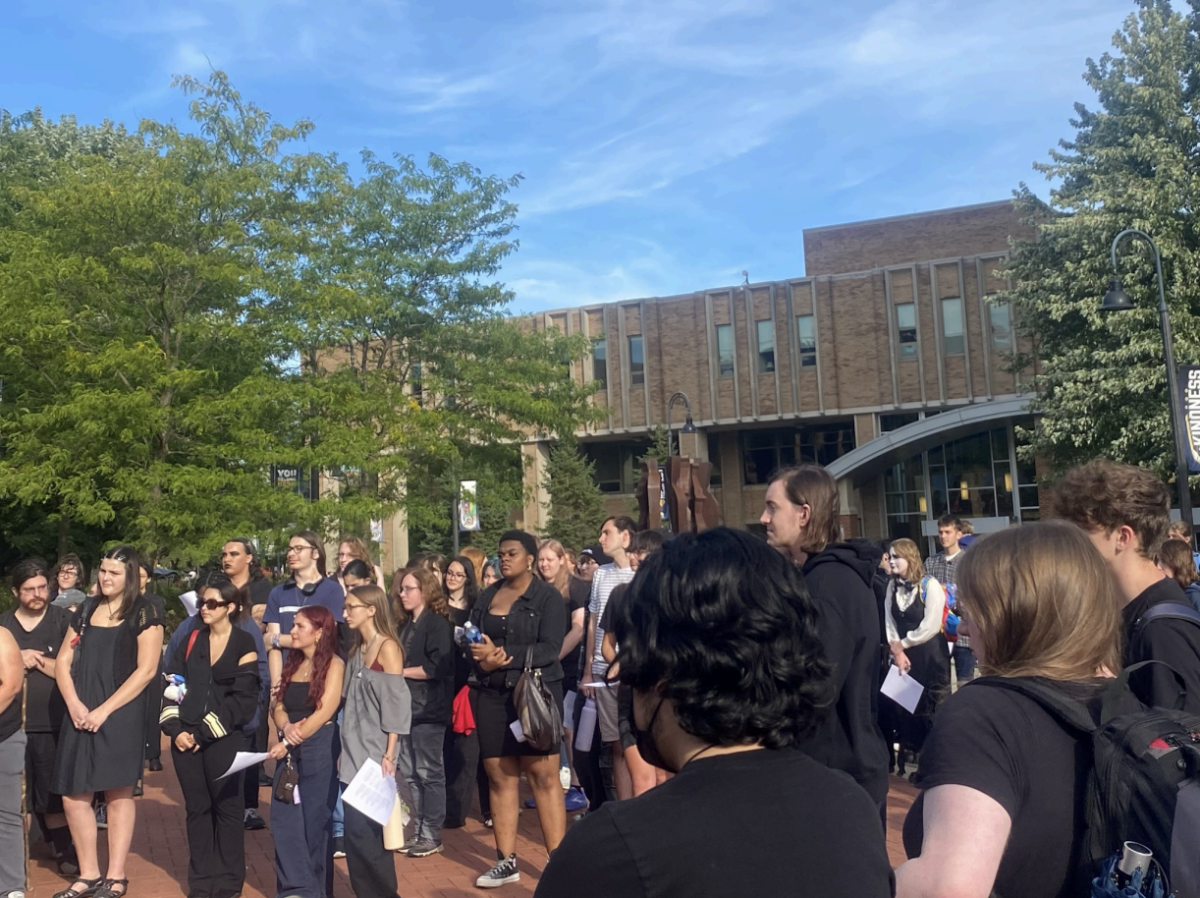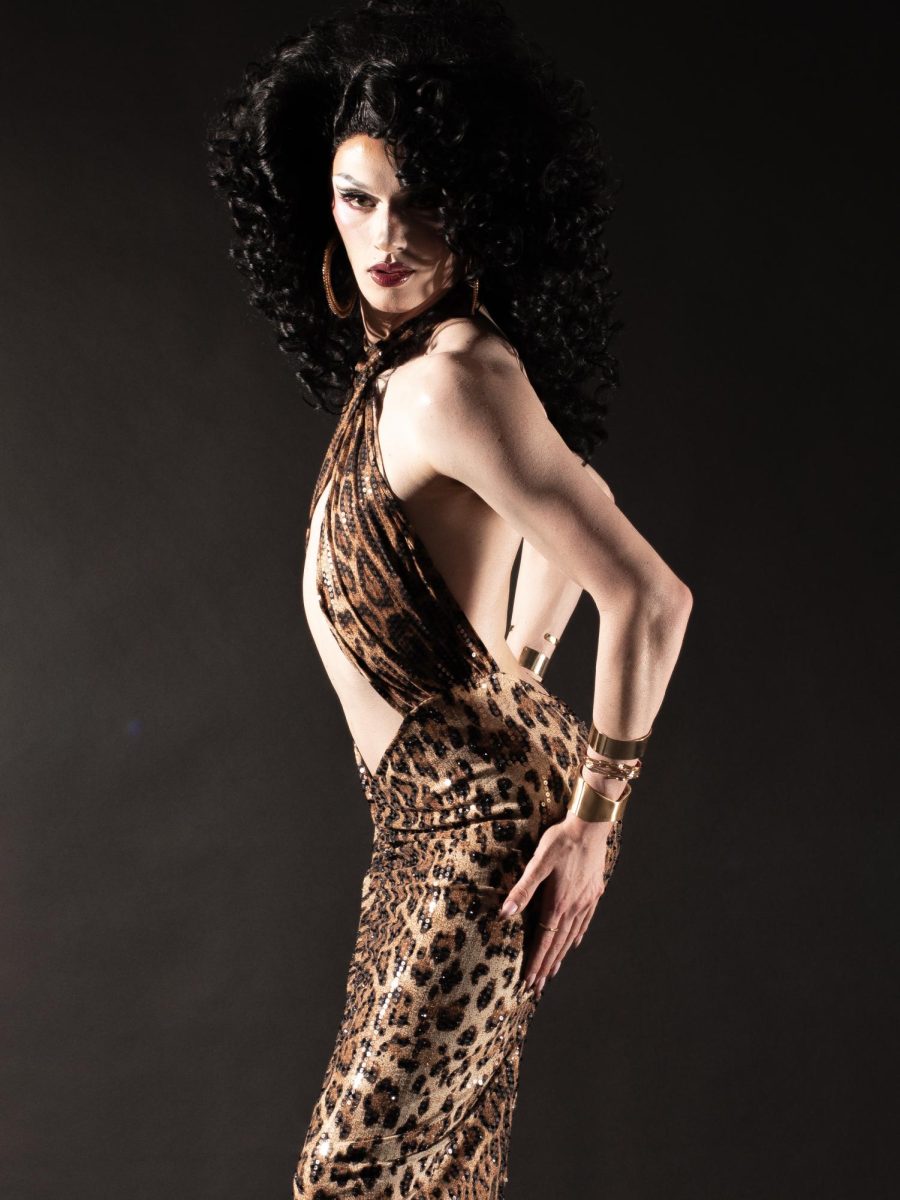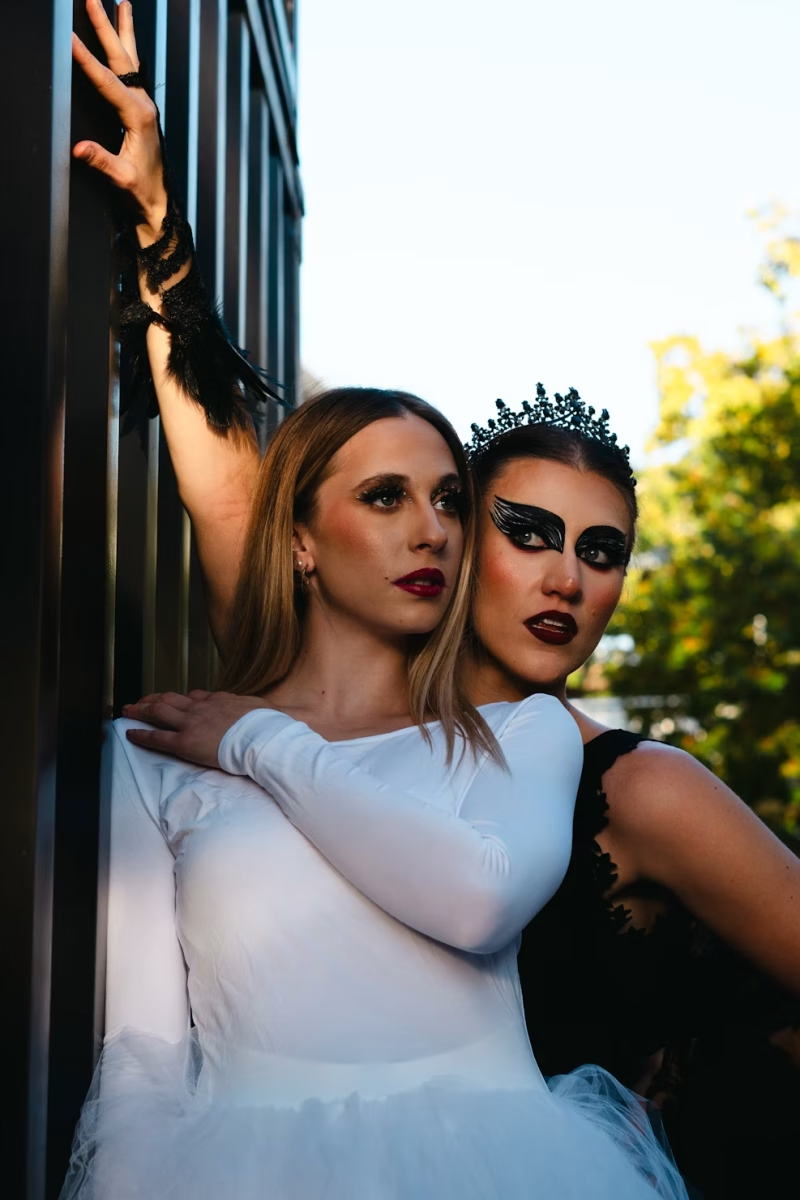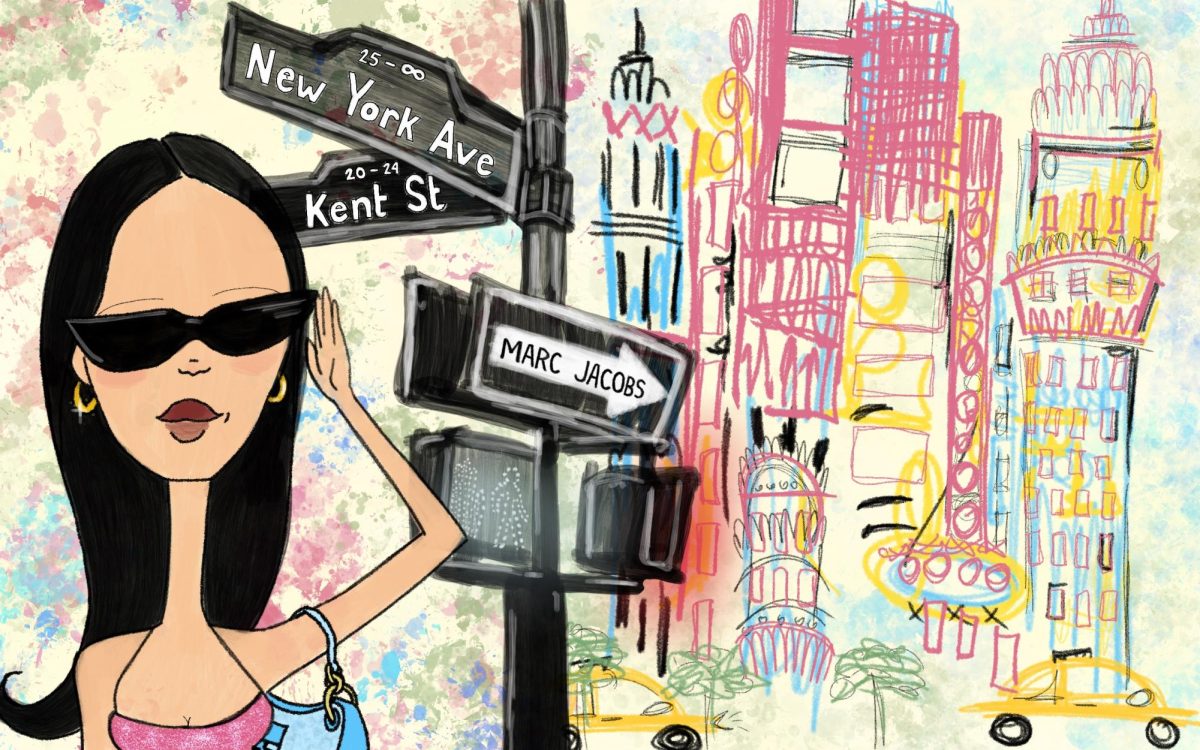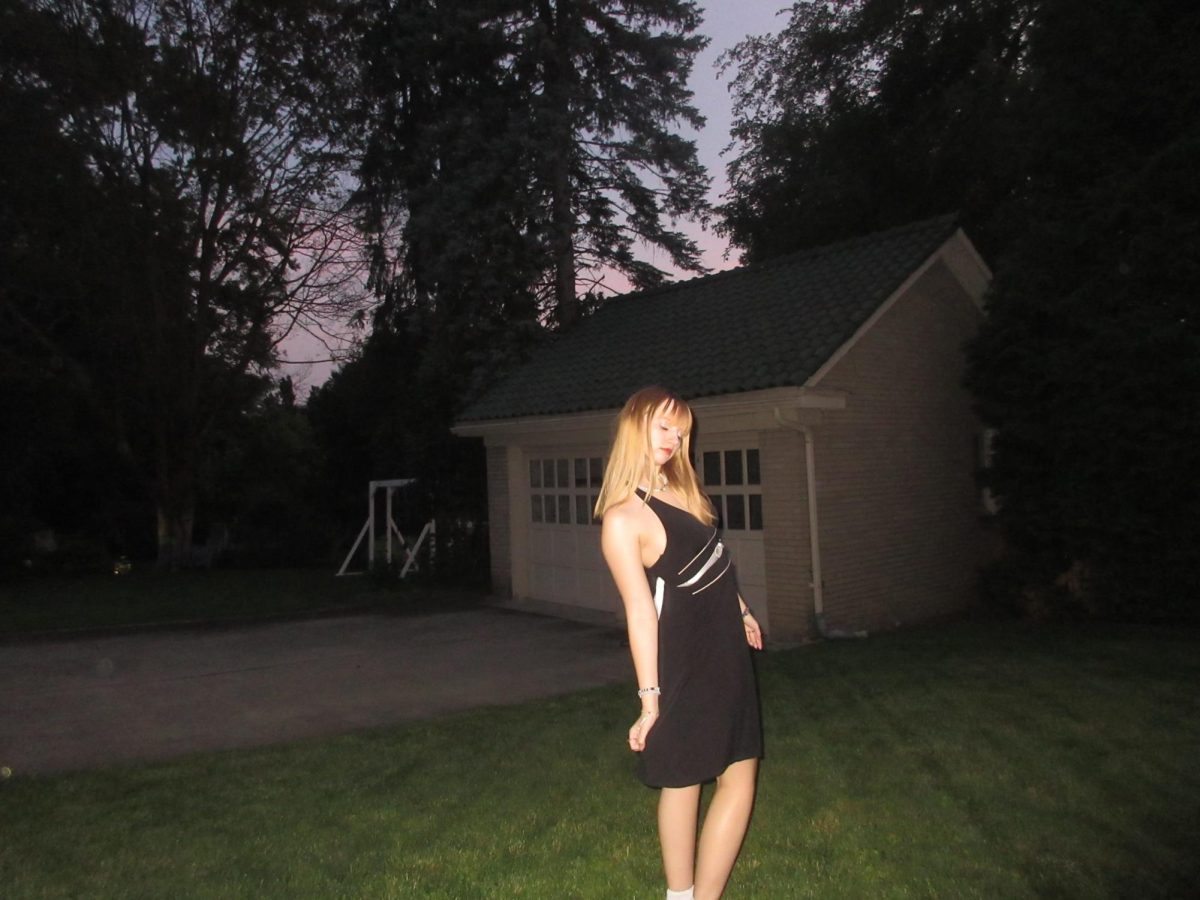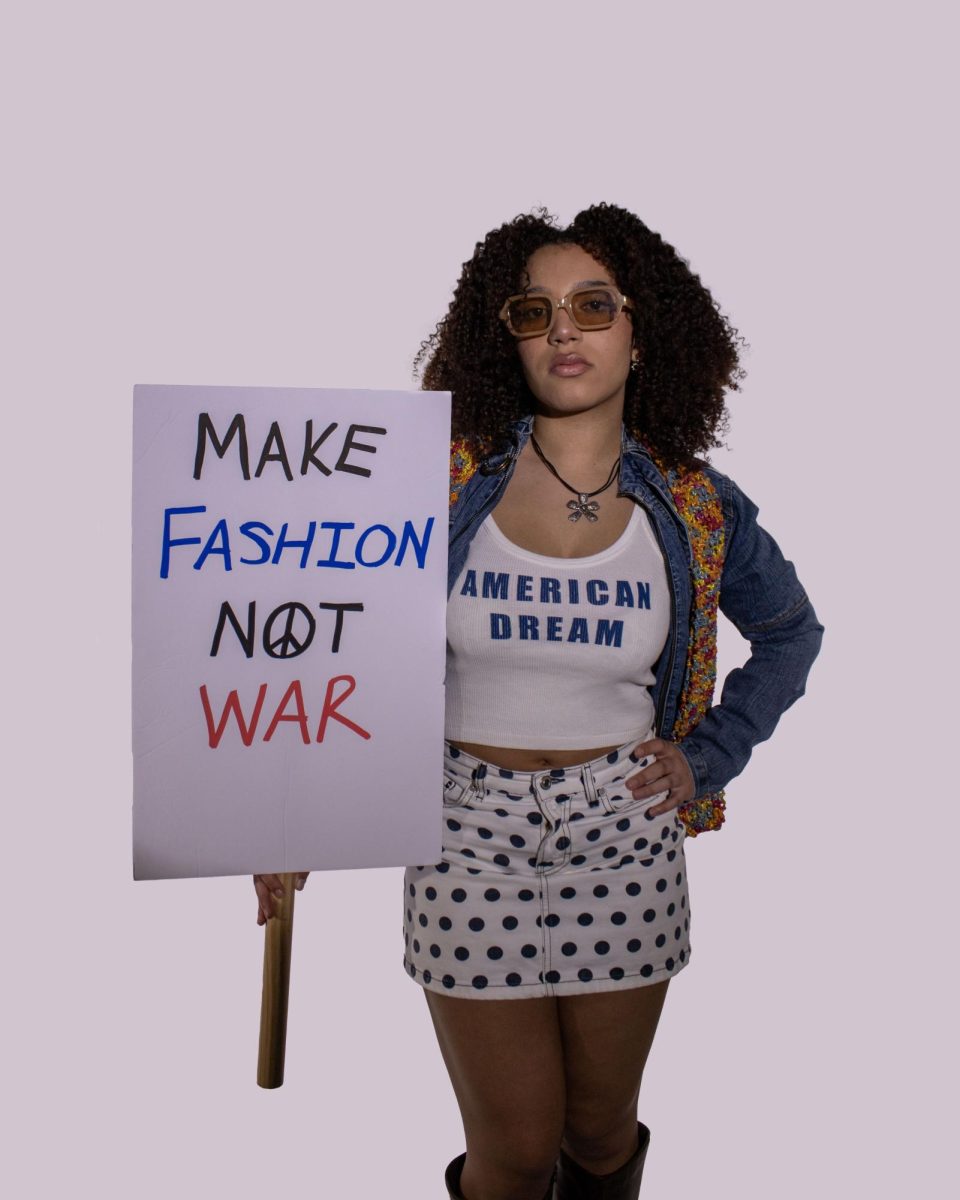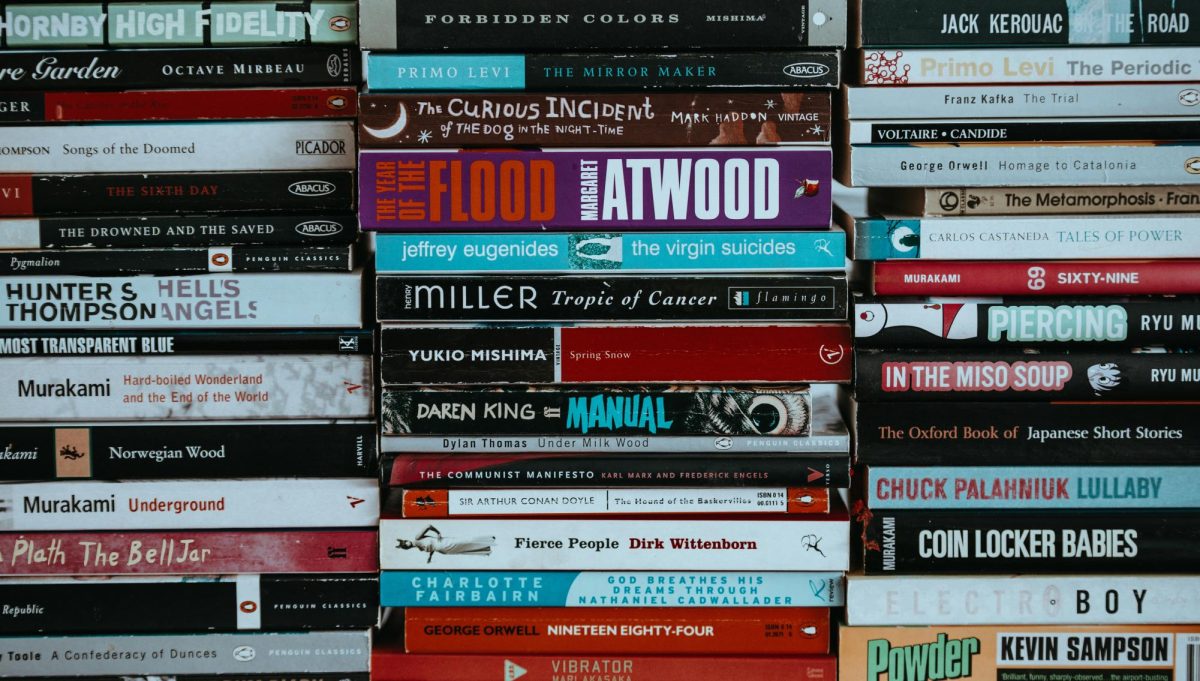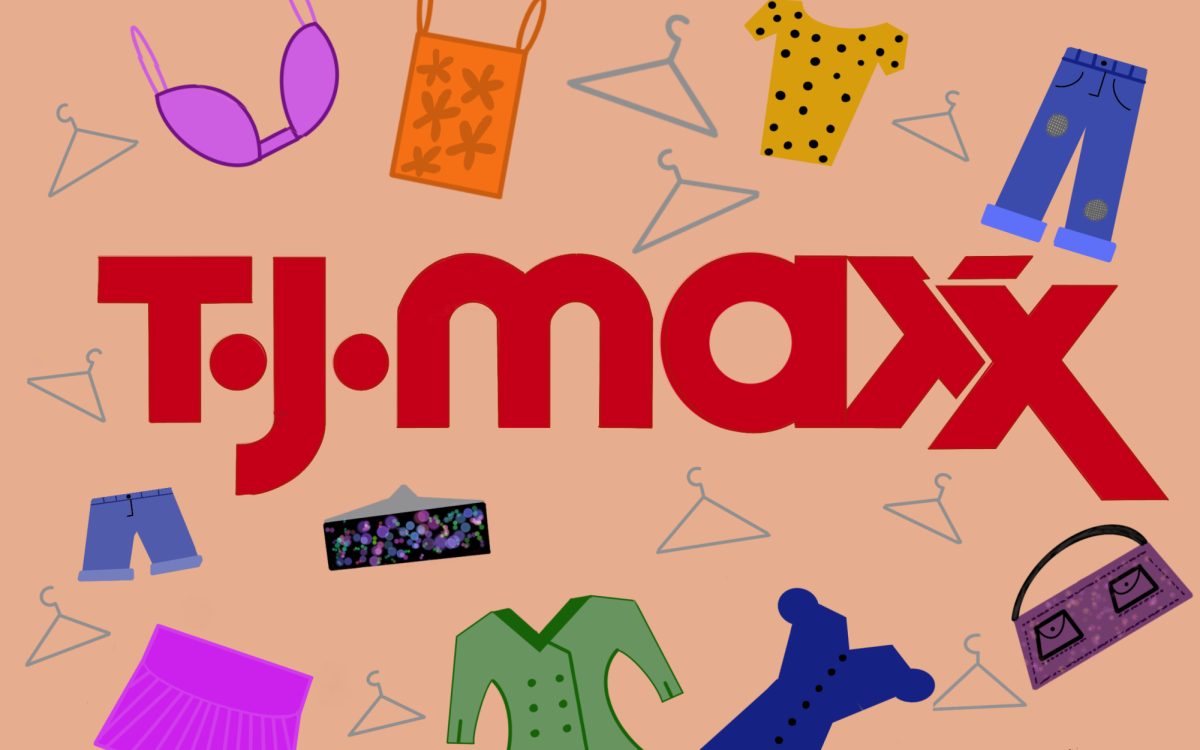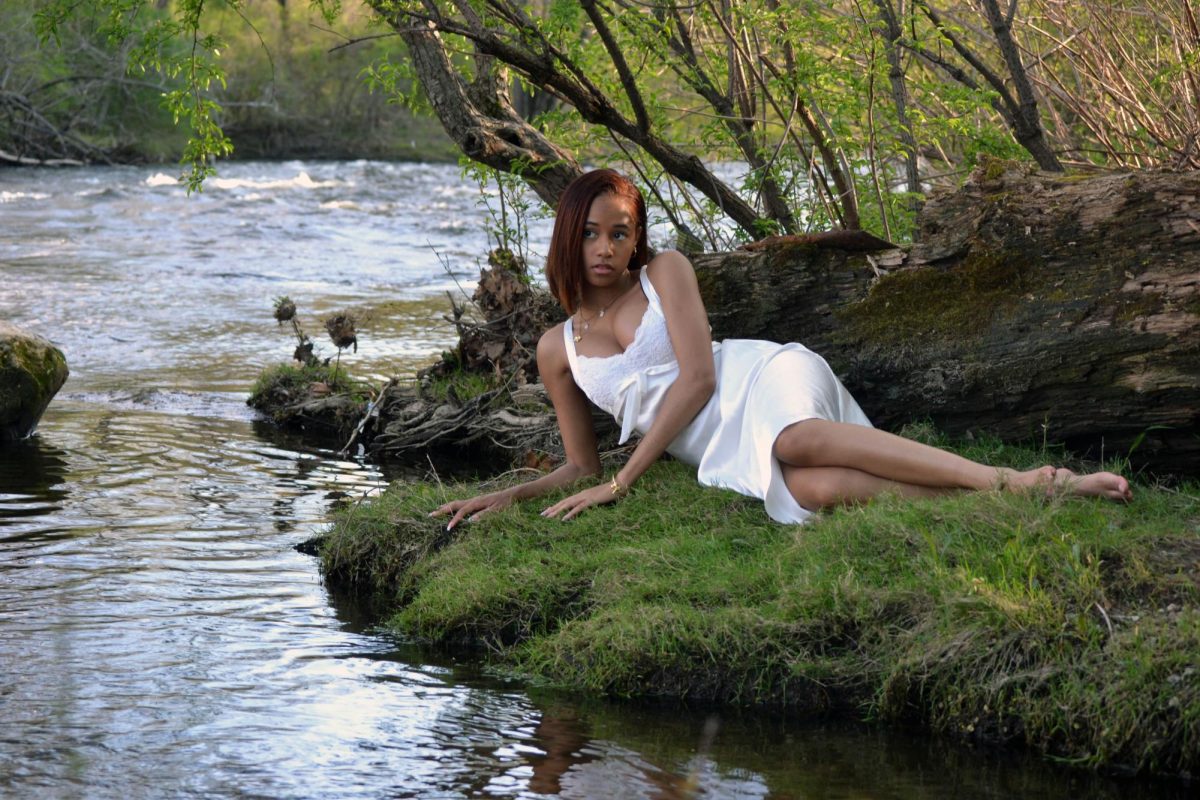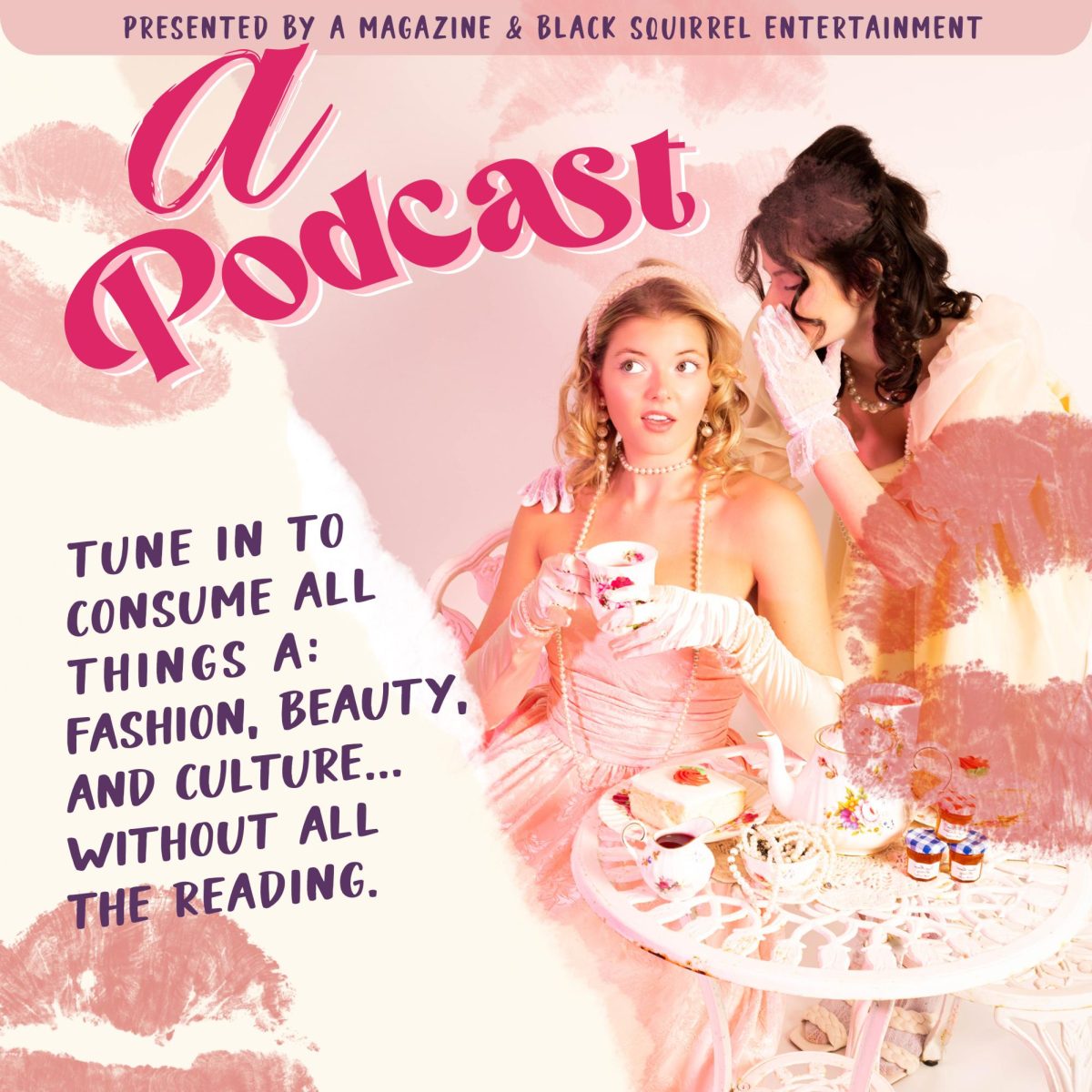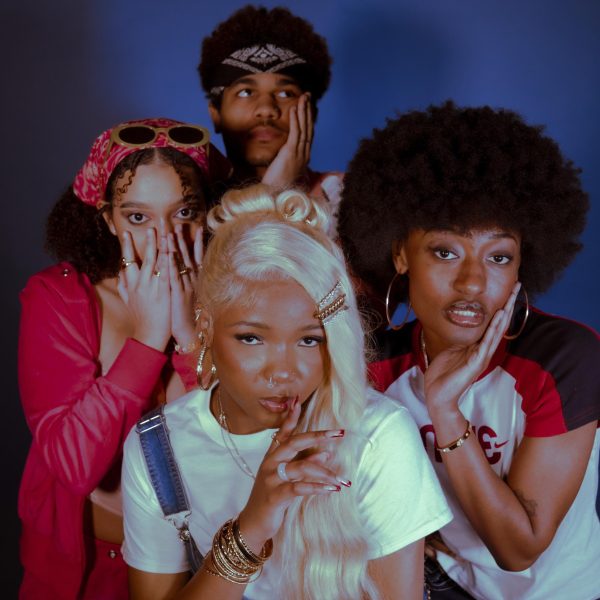
Creative director: Ty’Naya McNeal
Stylist: TyNaya McNeal, Ayla Barbeau, Trinity Sims, Journie Jones
Models: Ariana Robinson, Josiah Owens, Yasmine Adams, Reily Morris
The 1990s was one of the most transformative decades for Black culture, marking a period of change and creativity that continues to influence American society today. From music to fashion to entertainment, the ’90s was a groundbreaking time where black voices and experiences were celebrated, represented and amplified like never before. In many ways, the ’90s were a launching pad for the future, setting in motion the cultural movements that would inspire generations to come.
THE RISE AND EVOLUTION OF RAP
Originating in the Bronx in the ‘70s, rap has grown into a global phenomenon. The art of combining poetic lyrics, storytelling and wordplay took the Black community by storm. In 1979, The Sugar Hill Gang released “Rapper’s Delight,” the first commercially successful rap song. After the success of early rap artists and songs, many pioneers followed. Run-D.M.C merged both rock and rap, showcasing their natural swagger with tracks like “Walk This Way” and “It’s Tricky.” Meanwhile, Public Enemy used their platform to address racial issues through songs like “Fight the Power” and “Rebel Without a Pause.”
In the ’90s, rap evolved into a mainstream powerhouse, diversifying its sound and audience. This era is undoubtedly defined by the rise of rap legends like Tupac Shakur, The Notorious B.I.G., Jay-Z, Nas, Dr. Dre and many more. In this new decade, rap brought new levels of lyricism and storytelling. Topics also shifted. While the ‘80s popularized both braggadocious rap and music about social consciousness, the ’90s expanded into more raw, personal narratives. The term “gangsta rap” was coined for the number of artists who began reflecting on the harsh realities of growing up in black neighborhoods, being surrounded by gang violence, police brutality and systemic oppressions. Songs like “Miss You” by The Notorious B.I.G., “Fuck tha Police” by N.W.A. and “Brenda’s Got a Baby” by Tupac all being perfect examples of the complexities of street life.
At the same time, rappers like Jay-Z and Snoop Dogg decided to focus their music on emphasizing their wealth and luxurious lifestyles. Instead of focusing on the adversity they faced regularly, they rapped about the rewards of overcoming said adversity. Jay-Z’s 1996 album “Reasonable Doubt” balanced his street wisdom with financial lessons. From early on in his career, Jay-Z seemed to know the importance of investing in himself and creating generational wealth. Similarly, Snoop Dogg, who emerged in the early ’90s under the mentorship of Dr. Dre, brought the laid-back style of the West Coast to the mainstream. While Snoop’s early music was heavy with gangsta rap themes, he easily transitioned and found success in music that celebrated his wealth and carefree lifestyle. Songs like “Drop It Like It’s Hot” and “Who Am I? (What’s My Name)” reflected his evolution from street hustler to cultural icon.
And of course, rap and the ’90s was completely redefined by the voices of female rappers like Lil’ Kim, Missy Elliot and Foxy Brown. These ladies brought female empowerment, innovation and sexuality to the forefront of a male-dominated genre. All three women took a very different approach. Missy Elliot’s 1997 debut album “Supa Dupa Fly”, showcased her eccentric style, futuristic beats and clever wordplay. Unlike many of her peers, Missy stood out as she didn’t conform to beauty standards and opted for a more masculine look. Lil’ Kim is undoubtedly the pioneer of female rap as we know it. She shattered expectations by revolutionizing female rap including raunchy lyrics and high-fashion clothes, setting the stage for a new generation of female rap stars.
In 2025, rap is continuing to evolve, building upon the foundations that have been laid in the ’90s while also embracing the new musical landscape and cultural shifts. The ’90s were defined by raw storytelling, gangsta rap and the rise of luxury rap, but today’s artists are influenced by many different avenues of music. From melodic trap to afrobeats to drill. Social commentary remains a key element, artists like Kendrick Lamar and J. Cole are the more prominent leaders of conscious rap, while their peers, such as Travis Scott, Drake and Future are known to focus on their lifestyle, emotion, and creative production elements. What really sets this era apart from any other era of hip-hop is the domination of female rappers. Nicki Minaj, opened up many doors for female rappers during her rule over the rap space in the 2010s. Now in 2025, it seems like almost every few months there is a new female rapper who is added to the musical landscape. Artists like Megan Thee Stallion, Cardi B, Doechii and many more have pushed the future of rap to new heights. Though much has changed, the essence of rap—storytelling, self-expression and cultural influence—remains as powerful as ever. Even in 2025, rap beefs continue to fuel the competitive nature of the genre, providing drama and engagement that amplifies the reach of artists and the culture itself.
THE INFLUENCE OF BLACK FILM AND TELEVISION
Black film and television in the ’90s played a pivotal role in shaping the industry, establishing the foundation for the themes that are seen in today’s black cinema and TV productions. Films finally started to depict the complex and authentic representation of the black experience. Just like in rap music, the movies began to focus on the hardships of the streets as well as highlighting family dynamics and social struggles. Popular movies included “Boyz n the Hood” , “Poetic Justice” and “The Best Man” which all broke away from stereotypical portrayals of black people and gave voice to an underrepresented community. These films explored the realities of systemic racism and personal growth, while also celebrating black culture. The success of these films proved that audiences were ready to embrace and learn about the complexities of black lives in America, pushing film studios to embrace a wider range of narratives.
Sitcoms in the ’90s were just as significant. Shows like “The Fresh Prince of Bel-Air” , “Living Single” and “Moesha” quickly gained a consistent following as they showcased the diversity within the black community and redefined how black characters and families were portrayed, all while simultaneously discarding comedic and dramatic storylines that resonated with audiences. Family, friendship and ambition were common themes in these sitcoms, breaking free from the one-dimensional and/or blatant racist depictions of black people seen in earlier media. Tackling issues such as class and race, these shows have laid the groundwork for more nuanced portrayals of black life
In contemporary black film and television, the clear linear succession of bold storytelling and groundbreaking themes of the ’90s can be seen. Today, writers and directors have continued to build on the foundation established by filmmakers from that era, while also highlighting more diverse stories and perspectives. The rise of streaming platforms has allowed black filmmakers to explore a range of stories, from historical dramas to science fiction. Shows like “Insecure”and movies like “Black Panther” reflect the evolving nature of black storytelling, blending cultural authenticity with broader global appeal. As the industry continues to grow, the influence of ’90s black film and television remains undeniable, serving as both a blueprint and an inspiration for future generations of storytellers.
THE RISE OF STREETWEAR AND SNEAKER CULTURE
The ’90s marked the emergence of the streetwear revolution, driven by black culture. During the ’90s, hip-hop was the epicenter of streetwear. Rappers like Tupac and Biggie popularized oversized hoodies, baggy pants and graphic tees. This style, worn largely by the black youth, was not only used as a means of self-expression but also as a form of resistance against the mainstream fashion norms. The fusion of comfort and rebellion has now evolved into a global fashion trend, loved by people of all backgrounds.
The influence of ’90s black streetwear is particularly evident in the rise of sneaker culture, which began in that era and has only grown in prominence since. Brands like Nike, Adidas and Reebok became deeply intertwined with hip-hop and urban style, with sneakers becoming a symbol of status and identity. The ’90s saw the debut of some of the most iconic sneakers like the Nike Air Max 95, the Reebok Pump and the Air Jordan 11, which became not just sportswear, but symbols of urban fashion. Today, sneaker collaborations between high-end designers like Virgil Abloh and Pharrell Williams and traditional sneaker brands continue to showcase the bond between black street culture and mainstream fashion. The demand for limited-edition sneakers and the popularity of sneakerhead culture are a direct continuation of the ’90s streetwear ethos of exclusivity.
Streetwear in the ’90s also introduced the concept of logo-driven fashion, where prominent brands like FUBU and True Religion became synonymous with black urban style. Wearing these logos was more than just a fashion choice—it was a declaration of status and cultural pride. Today, logo-centric designs have become a staple across the fashion industry, with luxury brands like Gucci, Louis Vuitton and Balenciaga embracing the use of large logos on clothing, proving that the influence of ’90s streetwear has become a defining feature of fashion, both high and low.
THE LASTING LEGACY
The 1990s was a pivotal decade for black culture, with lasting impacts on music, fashion, and entertainment that continue to shape today’s landscape. As we move forward, the legacy of the ’90s remains a powerful reminder of how black culture has not only persevered but thrived, leaving an indelible mark on the world.
Support Student Media
Hi! I’m Kayla Friedman, A Magazine’s editor-in-chief. My staff and I are committed to bringing you the most important and entertaining news from the realms of fashion, beauty and culture. We are full-time students and hard-working journalists. While we get support from the student media fee and earned revenue such as advertising, both of those continue to decline. Your generous gift of any amount will help enhance our student experience as we grow into working professionals. Please go here to donate to A Magazine.

